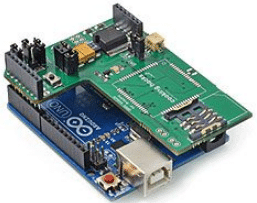About us
FASTPCBA Co.,Ltd
-
 Building 1, Senyang Electronic Technology Park, Guangming High-tech Park, Yutang Street, Guangming District, Shenzhen City.
Building 1, Senyang Electronic Technology Park, Guangming High-tech Park, Yutang Street, Guangming District, Shenzhen City.
-
 F:86-13418481618
F:86-13418481618
-
 pcba13@fastpcba.cn
pcba13@fastpcba.cn
 date:2019-05-10 14:36:00
date:2019-05-10 14:36:00
What is the difference between lead-spray tin and lead-free tin-plated PCB board?
The craft requirements in PCB board production are an important factor, and directly determines the quality and positioning of a board.

For example, spay tin,immersion gold, relatively speaking, immersion gold is facing the high-end board. Due to its good quality, immersion gold is relatively high in cost.
Therefore, many customers choose the most common tin spray craft. Many people know the tin-spraying craft, but they don't know that tin is also divided into lead-tin and lead-free tin.
Today, I will tell you in detail about the difference between lead tin and lead-free tin for your reference.
1. From the surface of tin, lead tin is brighter, and lead-free tin (SAC) is dim. Lead-free wettability is worse than lead tin.
2. Lead is harmful to the human body, but lead-free tin doesn’t. The lead eutectic temperature is lower than that of lead-free . How much depends on the composition of the lead-free alloy,the eutectic like SNAGCU is 217 degrees and the welding temperature is eutectic temperature plus 30 to 50 degrees. It depends on the actual adjustment. The lead eutectic is 183 degrees. Lead in mechanical strength, brightness, etc. is better than lead-free.
3. The lead content of lead-free tin does not exceed 0.5, and lead has reached 37.
4. Lead will improve the activity of the tin wire in the welding process, lead wire is relatively better than the lead-free tin wire, but lead is toxic, long-term use is not good for the human body, and lead-free tin will have a higher melting point than lead-tin. This makes the solder joints much stronger.
What is the difference between lead-free spray and lead-spray tin on PCB board? What is the temperature?
A.PCB lead-free spray tin is environmentally friendly and contains no harmful substances "lead", melting point is about 218 degrees; tin soldering furnace temperature needs to be controlled at 280-300 degrees; over-peak temperature needs to be controlled at about 260 degrees; reflow temperature 260-270 degrees.
B. PCB board lead spray tin is not environmentally containing "lead" harmful substances, melting point about 183 degrees; spray tin furnace temperature needs to be controlled at 245-260 degrees; over-peak temperature needs to be controlled at about 250 degrees; over-reflow temperature 245-255 degrees
 Building 1, Senyang Electronic Technology Park, Guangming High-tech Park, Yutang Street, Guangming District, Shenzhen City.
Building 1, Senyang Electronic Technology Park, Guangming High-tech Park, Yutang Street, Guangming District, Shenzhen City.
 F:86-13418481618
F:86-13418481618
 pcba13@fastpcba.cn
pcba13@fastpcba.cn